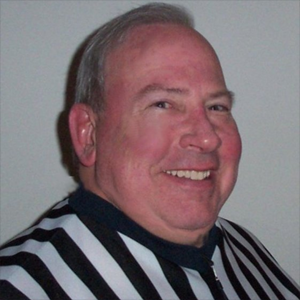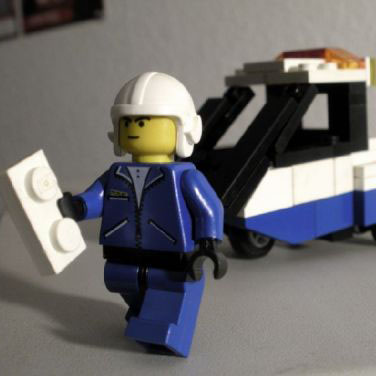
Rndballref
20 Years Experience
Chicago, IL
Male, 60
For twenty years I officiated high school, AAU and park district basketball games, retiring recently. For a few officiating is the focus of their occupation, while for most working as an umpire or basketball referee is an avocation. I started ref'ing to earn beer money during college, but it became a great way to stay connected to the best sports game in the universe. As a spinoff, I wrote a sports-thriller novel loosely based on my referee experiences titled, Advantage Disadvantage
In NFHS all flagrant fouls (personal or technical) result in 2 free throws plus the ball at half court. In addition, the player charged with a flagrant foul is immediately disqualified. You never shoot 1 and 1 on a flgrant foul.
I would immediately throw the player out of the game with a flagrant technical. In Illinois, the player would also be suspended for the next game.
I am not a coach, but I will venture an opinion and a recomendation.
He probably goes to a position on the floor, "feels" the defender, and backs into the him. One thing refs are taught about contact low in the blocks is to call a foul on the player who dislodges the opponent. So if he sizes up the defender and then uses his rear end to create space, the refs will call a foul for moving the opponent, I know, big players are taught to use their bodies to block out and create space, but when it is so obvious that he is dislodging the other player it is a foul. So, what is a big strong player to do? Bluntly speaking, use his feet more than his ass. Create space by hustling to a place closer to the basket, then hold your ground and let the defender dislodge you for a foul.
How does a big player get lighter on his feet? Running and jump rope are the best ways I know. Sounds like somewhere along the way someone taught him lazy block out technique if he is constantly in foul trouble.
Have you spoken to his coach about the foul trouble? I bet the tape shows that he is dislodging players without moving his feet.
There are five correctible errors in the NFHS rulebook: 1) failure to award a merited FT, 2) awarding an unmerited FT, 3) permitting the wrong player to shoot a FT, 4) attempting a FT at the wrong basket, & 5) Erroneously counting or cancelling a score. Unfortunately in your scenario, the error was in announcing 2 free throws (he never progressed to awarding the erroroneous 2nd freet throw). So, the error is not correctible, the basket counts, and now belongs to the opposing team. Tough break because of bad officiating.
Rap Promoter / Manager
 Do rappers ever stage beefs with each other as a PR stunt?
Do rappers ever stage beefs with each other as a PR stunt?
Call Center Employee (Retail)
 When do your policies allow you to hang up on a rude caller?
When do your policies allow you to hang up on a rude caller?
Meter Maid
 Is it tough to have a job that consists exclusively of ruining peoples' days?
Is it tough to have a job that consists exclusively of ruining peoples' days?
Fifteen minutes before the game, the officials are to take their positions on the court. An Umpire (U1 & U2) stand on the sideline at approximately the free throw line extended. While walking to their positions, all officials are to look for obstructions, short throw in areas, proper bench locations, and proper coaches boxes. The referee stands at half court. The umpires are tasked with 2 things: get a count of the players and look for faulty or illegal equipment (metal clips in hair, unauthorized uniform variances, etc.). The referee takes the player count from both umpires and between 10-12 minutes before gametime the referee checks the scorer's book to 1) ensure that the book has at least as many entries as there are players warming up, and 2) that the starters are designated in the bokk no later than 10 minutes before game time. Once the book is verified, the referee calls the umpires together along with team captains and coaches. The referee normally conducts the pregame with mandatory state-required admonishments. Then the referees go back to their positions and right before the nationa anthem stand in front of the scorers table.
I never found a coach trying to take advantage of equipment except there have been over or underinflated balls that I have adjusted. Many referees carry an inflation pin in case they have to let some air out of a game ball.
you can tap a ball. the main prohibition is that you cannot punch the ball with a fist.
Carrying the ball is one of ways the rule book states that a dribble comes to an end. So the very next dribble should be called as a double dribble if the player carried the ball prior to the subsequent dribble. My opinion is that refs have allowed too much carrying to go on - the dribbler gains too much control of the basketball if you let a player cup or turn over the ball.
-OR-
 Login with Facebook
Login with Facebook (max 20 characters - letters, numbers, and underscores only. Note that your username is private, and you have the option to choose an alias when asking questions or hosting a Q&A.)
(A valid e-mail address is required. Your e-mail will not be shared with anyone.)
(min 5 characters)
By checking this box, you acknowledge that you have read and agree to Jobstr.com’s Terms and Privacy Policy.
-OR-
 Register with Facebook
Register with Facebook(Don't worry: you'll be able to choose an alias when asking questions or hosting a Q&A.)